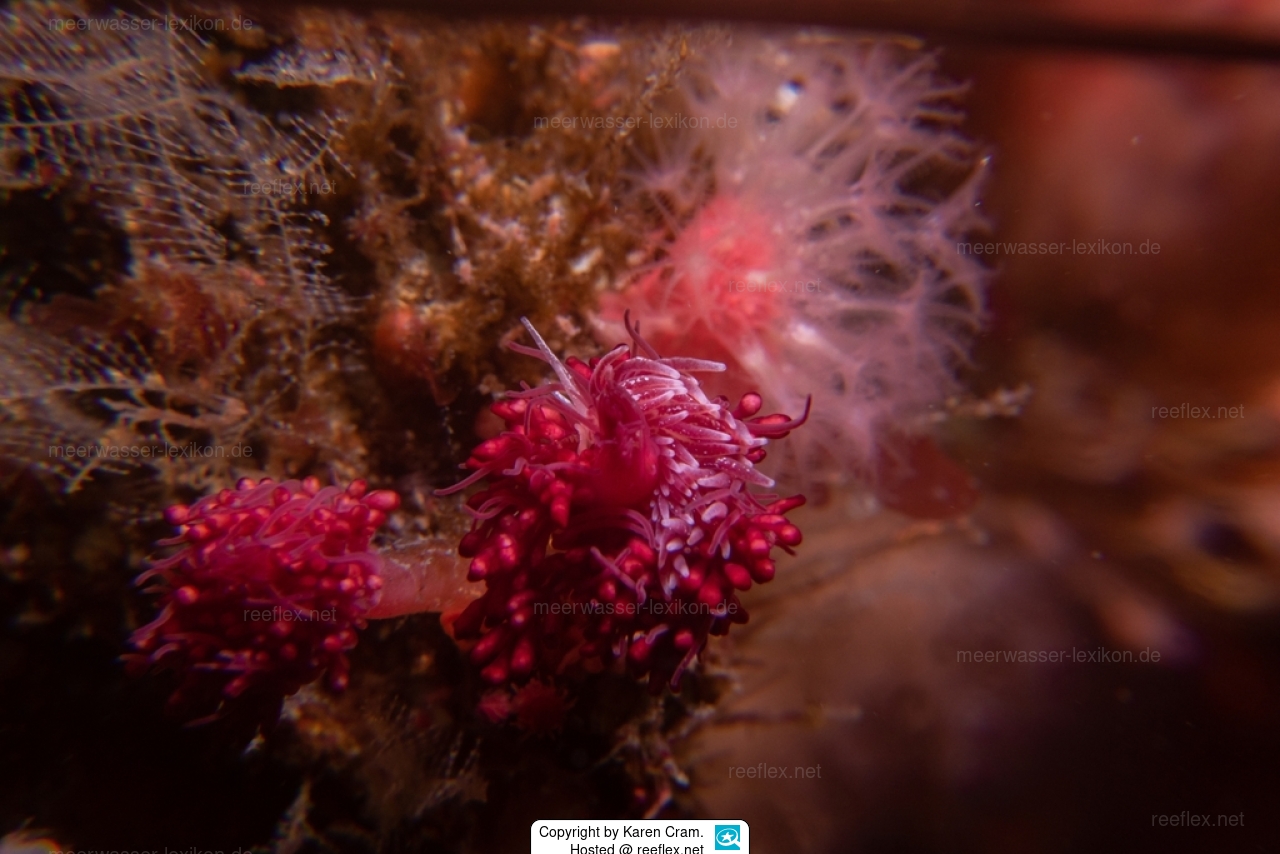Info
Cuthonella punicea (Millen, 1986)
The type locality for the description of Cuthonella punicea is British Columbia, Canada. The snail is also only known from there.
The body is translucent white to pale peach-colored. The oral tentacles have opaque white spots on the upper side, which form a broad line. The rhinophores are sprinkled with opaque white spots, densest at the back and towards the tips, sometimes forming a line.
The digestive gland in the cerata is dark wine-red to purple and the sheaths may be peach-colored. The cerata have an interrupted line of opaque white pigment, sometimes appearing as a blotchy line on their outer sides, and have white tips due to dense subepidermal glands.
The cerata are arranged in 13-23 irregular, transverse rows. The rows are not simple, but usually arranged in pairs, forming a horseshoe with the largest, innermost cerata in the center.
Cuthonella punicea feeds as a food specialist on the raspberry hydroid Zyzzyzus rubusidaeus (Hydrozoa). The spawn of Cuthonella punicea is deposited on these hydrozoa.
There is a possibility of confusion with Catriona columbiana and Zelentia nepunica.
The type locality for the description of Cuthonella punicea is British Columbia, Canada. The snail is also only known from there.
The body is translucent white to pale peach-colored. The oral tentacles have opaque white spots on the upper side, which form a broad line. The rhinophores are sprinkled with opaque white spots, densest at the back and towards the tips, sometimes forming a line.
The digestive gland in the cerata is dark wine-red to purple and the sheaths may be peach-colored. The cerata have an interrupted line of opaque white pigment, sometimes appearing as a blotchy line on their outer sides, and have white tips due to dense subepidermal glands.
The cerata are arranged in 13-23 irregular, transverse rows. The rows are not simple, but usually arranged in pairs, forming a horseshoe with the largest, innermost cerata in the center.
Cuthonella punicea feeds as a food specialist on the raspberry hydroid Zyzzyzus rubusidaeus (Hydrozoa). The spawn of Cuthonella punicea is deposited on these hydrozoa.
There is a possibility of confusion with Catriona columbiana and Zelentia nepunica.







 Karen Cram, Canada
Karen Cram, Canada







